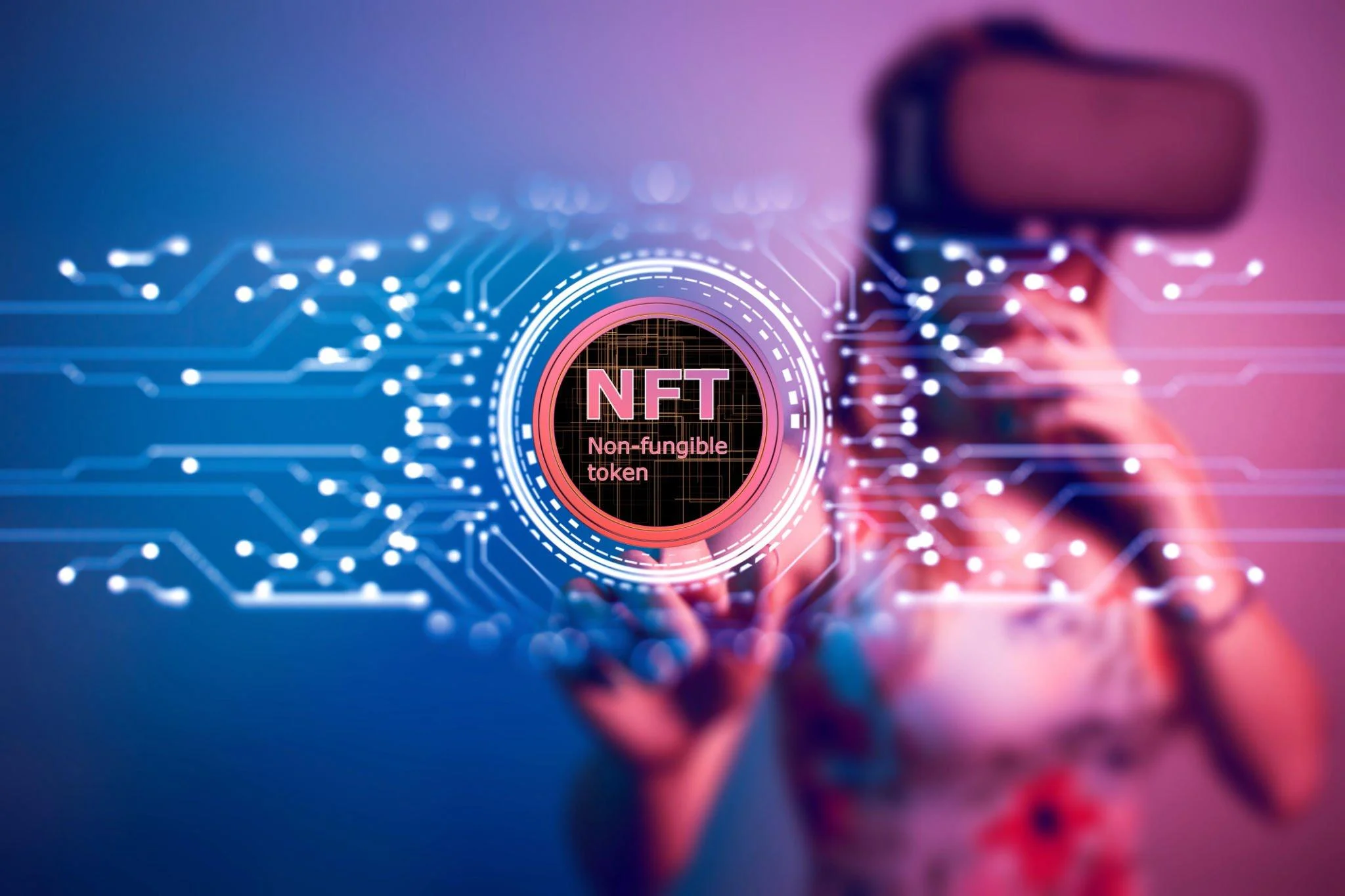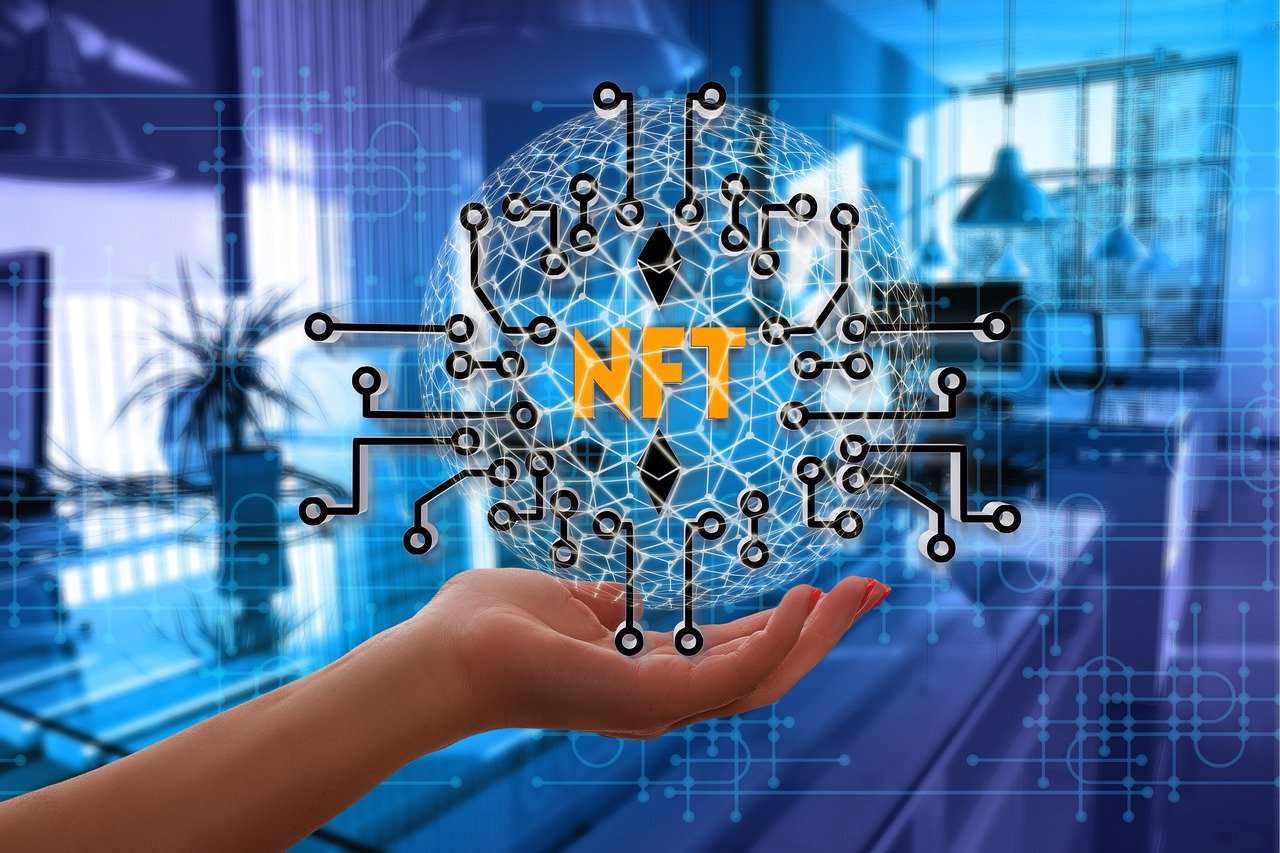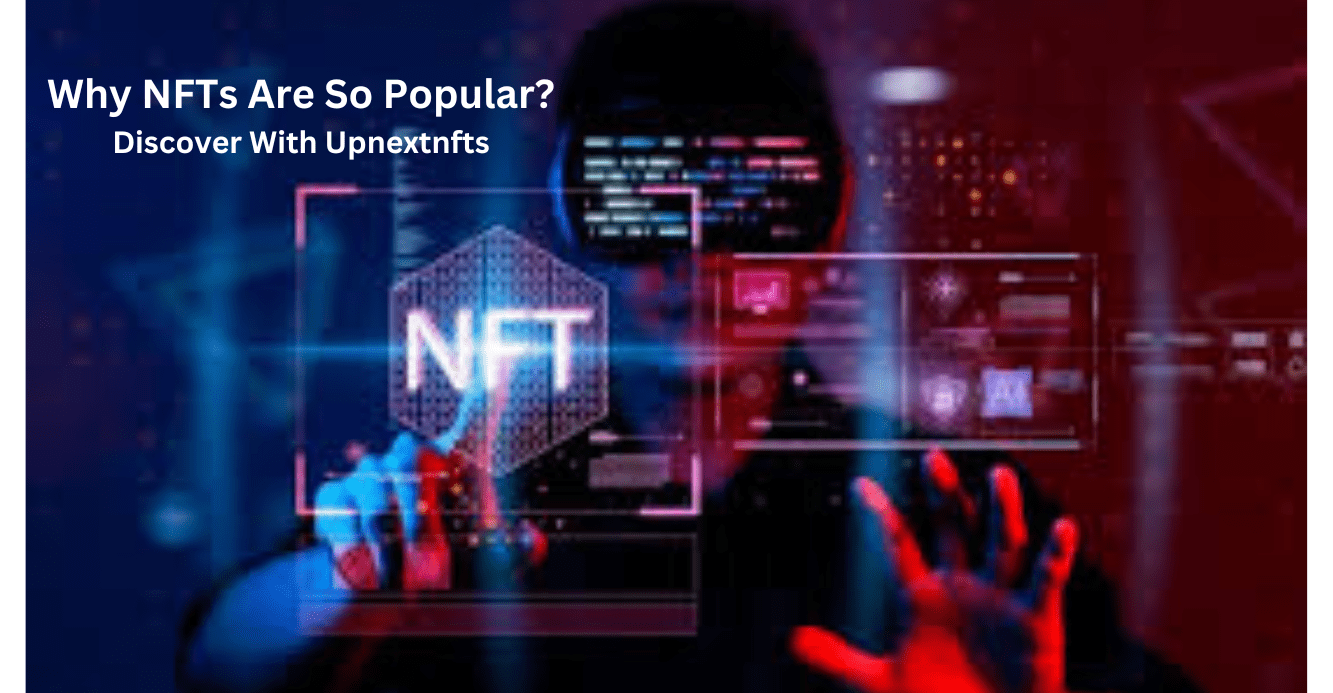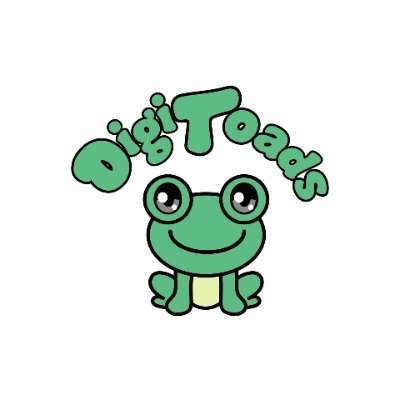
How to Create an NFT
Introduction:
In recent years, Non-Fungible Tokens (NFTs) have gained immense popularity as a means of representing ownership and authenticity of digital assets. Whether you’re an artist, content creator, or simply curious about NFTs, this comprehensive guide will walk you through the process of creating your very own NFT. Here is the Guide for How to Create an NFT.
-
Understanding NFTs
-
What are NFTs?
NFTs, or Non-Fungible Tokens, are unique digital assets that represent ownership or proof of authenticity of a specific item or piece of content. Unlike cryptocurrencies like Bitcoin or Ethereum, which are fungible and can be exchanged on a one-to-one basis, NFTs are indivisible and cannot be exchanged on an equal basis. Each NFT has a distinct value and specific attributes that make it different from other tokens. learn more here.
-
How do NFTs work?
NFTs are built on blockchain technology, most commonly on the Ethereum blockchain. The Ethereum blockchain utilizes smart contracts, which are self-executing contracts with the terms of the agreement directly written into code. These smart contracts enable the creation and management of NFTs.
When an NFT is created, a unique digital token is minted and recorded on the blockchain.
This token serves as a digital certificate of ownership, verifying the authenticity and uniqueness of the associated digital asset. The blockchain maintains a public ledger of all transactions and ownership history, providing transparency and preventing fraud or duplication. -
Benefits of NFTs
-
Authenticity and Provenance: NFTs provide a means to verify the authenticity and provenance of digital assets. The blockchain ledger ensures the ownership history of an NFT is transparent and cannot be tampered with, giving artists and creators a way to protect their work from plagiarism.
-
Ownership and Control: NFTs allow individuals to have true ownership of digital assets. Unlike traditional digital files, which can be easily copied and shared, NFTs provide a way to prove ownership and control over a specific digital item, granting unique rights and privileges to the owner.
-
Monetization Opportunities: NFTs have opened up new avenues for artists, creators, and content owners to monetize their work directly. Artists can sell their digital artwork or other digital assets as NFTs, retaining ownership and earning royalties from subsequent sales in the secondary market.
-
Access to Global Marketplaces: NFTs enable creators to reach a global audience without intermediaries. Through NFT marketplaces, artists can showcase and sell their work to collectors and enthusiasts worldwide, expanding their reach and potential revenue streams.
-
Interoperability and Programmability: NFTs can be designed to have programmable features, allowing for dynamic and interactive experiences. Smart contracts associated with NFTs can include additional functionality, such as unlockable content, royalties, or in-game utility, creating new possibilities for engaging with digital assets.
-
Collectibility and Scarcity: NFTs tap into the human desire for collectibles and the concept of scarcity. Limited editions or rare NFTs can hold significant value in the eyes of collectors, creating a market for unique and highly sought-after digital items.
These benefits have contributed to the widespread interest and adoption of NFTs across various industries, from art and music to gaming and virtual real estate.
-
-
-
Choosing an NFT Platform
-
Researching NFT marketplaces
- Before choosing an NFT marketplace, it’s essential to conduct thorough research to find a platform that aligns with your goals and caters to your target audience. Consider the following factors during your research:
-
User Base: Look for platforms with a large and active user base. A vibrant community of buyers, sellers, and collectors will increase the visibility and potential demand for your NFTs.
-
Reputation and Trustworthiness: Check the reputation of the marketplace by reading reviews, testimonials, and discussions on social media platforms or dedicated NFT communities. Consider platforms that are well-established and have a track record of successful transactions.
-
Offerings and Specializations: Different NFT marketplaces cater to various niches or types of digital assets. Some platforms focus on digital art, while others specialize in virtual real estate or collectibles. Choose a marketplace that suits your specific needs and aligns with your target audience.
-
Popular NFT platforms to consider
- While the NFT landscape is constantly evolving, there are several popular NFT platforms that you may want to consider. Here are a few examples:
-
OpenSea: One of the largest and most well-known NFT marketplaces, OpenSea offers a wide range of digital assets, including art, virtual items, domain names, and more. It supports various blockchain networks and has a large user base.
-
Rarible: Rarible is an Ethereum-based NFT marketplace known for its emphasis on community involvement. It allows users to create and sell NFTs with customizable royalty fees, giving artists greater control over their creations.
-
SuperRare: SuperRare is focused on digital art and aims to create a curated and exclusive marketplace. It emphasizes the scarcity and uniqueness of NFTs and has a reputation for high-quality artwork.
-
NBA Top Shot: NBA Top Shot gained popularity for its unique NFTs that represent memorable moments from NBA games. It appeals to sports enthusiasts and collectors.
Remember that the popularity and reputation of platforms may change over time, so it’s crucial to stay informed about emerging marketplaces and evolving trends.
-
Evaluating platform fees and requirements
- When choosing an NFT platform, it’s important to consider the fees and requirements associated with minting and selling your NFTs. Here are some key aspects to evaluate:
-
Minting Fees: Some platforms charge a fee for minting NFTs, which is the process of creating and recording the NFT on the blockchain. Compare the minting fees across different platforms and assess how they align with your budget and expected returns.
-
Transaction Fees: NFT transactions on blockchain networks involve transaction fees known as gas fees. Gas fees vary depending on network congestion and computational resources required. Research the gas fee structure of the platform you choose and consider the impact on your overall costs.
-
Secondary Market Fees: If you plan to earn royalties from secondary sales of your NFTs, evaluate the platform’s policies on royalty fees. Some platforms automatically enforce royalties, ensuring artists receive a percentage of future sales.
-
Requirements and Guidelines: Review the platform’s guidelines, terms of service, and content policies to ensure your NFTs comply with their requirements. Some platforms may have specific criteria for the type of content they accept.
By evaluating platform fees and requirements, you can make an informed decision that aligns with your financial goals and artistic preferences.
Remember, the NFT landscape is dynamic, and new platforms with unique features may emerge over time. Stay updated with the latest news and developments to make informed choices about the platforms you engage with.
-
-
Preparing Your Digital Asset
-
- Choosing the appropriate digital asset is a crucial step in creating an NFT. Consider the following factors when selecting your digital asset:
-
Originality and Uniqueness: Ensure that the digital asset you choose is original and holds value in terms of its uniqueness. NFTs often gain value based on their scarcity and distinctiveness, so selecting an asset that stands out can be advantageous.
-
Digital Art: Digital artwork is a popular choice for NFTs, but you can also explore other types of digital assets such as music, videos, virtual items, or even intellectual property like articles or poems. Evaluate the suitability of your asset for the target audience and the NFT marketplace.
-
Quality and Presentation: Opt for assets that have high-quality resolution and visual appeal. NFT buyers are often attracted to visually striking or well-crafted digital assets, so invest time in creating or curating assets that meet these criteria.Selecting the right digital asset
-
File formats and specifications
- Understanding the appropriate file formats and specifications is crucial to ensure compatibility and optimal presentation of your digital asset. Consider the following guidelines:
-
File Formats: Different NFT marketplaces may have specific requirements for file formats, but common formats include JPEG, PNG, GIF, MP4, or SVG. Check the marketplace guidelines to ensure your chosen format is supported.
-
Resolution and Size: Determine the recommended resolution and size limits for your digital asset. Higher resolution generally leads to better visual quality, but be mindful of file size limitations to ensure smooth uploading and downloading experiences.
-
Metadata: NFTs can include additional metadata, such as title, description, artist information, and tags. Craft a compelling and informative description that helps potential buyers understand the context, inspiration, or story behind your digital asset.
-
Enhancing the uniqueness of your NFT
- To make your NFT stand out and increase its value, consider enhancing its uniqueness. Here are a few strategies to consider:
-
Limited Editions: Consider creating limited editions of your NFTs to increase their exclusivity and desirability. For example, you can mint a specific number of copies or offer different tiers of editions with varying features or benefits.
-
Unlockable Content: Consider attaching additional content or benefits that can be unlocked by the NFT owner. This can include exclusive artwork variations, behind-the-scenes videos, or access to future drops or events, making the ownership experience more engaging.
-
Interactive or Dynamic Elements: Explore the use of interactive or dynamic elements within your NFT. This can include animations, sound effects, or generative algorithms that provide a unique and dynamic viewing experience for the NFT holder.
-
Collaborations or Collectible Sets: Collaborate with other artists or create collectible sets of NFTs. Collaborations can help expand your reach and tap into different communities, while collectible sets can incentivize collectors to acquire multiple pieces to complete a set.
By considering these factors and implementing strategies to enhance the uniqueness of your NFT, you can attract more attention from buyers and collectors, potentially increasing the value and demand for your digital asset.
Remember to check the specific guidelines and recommendations provided by the NFT marketplace you choose, as they may have additional requirements or suggestions to ensure the best presentation of your digital asset.
-
-
Setting Up a Crypto Wallet
-
Choosing a compatible crypto wallet
- To create and manage your NFTs, you’ll need a compatible crypto wallet. Consider the following factors when choosing a wallet:
-
Blockchain Compatibility: Ensure that the wallet you choose is compatible with the blockchain network on which your chosen NFT marketplace operates. For example, if you’re using Ethereum-based marketplaces, you’ll need a wallet that supports the Ethereum blockchain.
-
User-Friendly Interface: Look for a wallet with a user-friendly interface and intuitive design. A well-designed wallet can make it easier for you to navigate and interact with your NFTs.
-
Security Features: Pay attention to the security features offered by the wallet. Features like two-factor authentication (2FA), secure password management, and hardware wallet integration can enhance the security of your wallet and protect your NFTs.
-
Community Support: Consider the level of community support and active development behind the wallet. A wallet with an engaged community can provide access to resources, tutorials, and troubleshooting assistance.
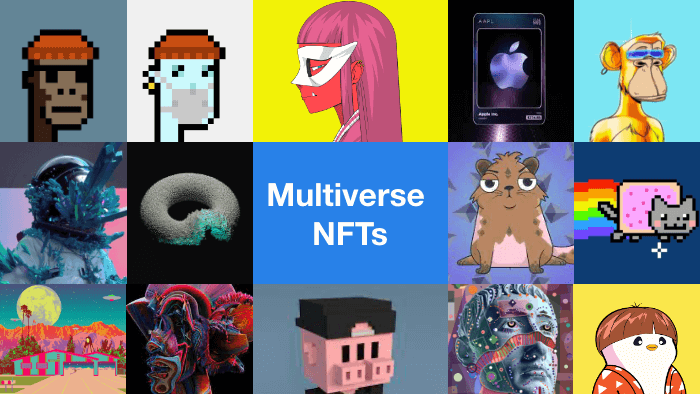
How to Create an NFT -
Creating a wallet and securing your keys
- Once you’ve chosen a compatible crypto wallet, you’ll need to create a wallet and secure your keys. Follow these general steps:
-
Download and Install: Visit the official website of the wallet provider and download the appropriate version of the wallet for your device (desktop, mobile, or hardware wallet). Follow the installation instructions.
-
Set Up a New Wallet: Create a new wallet within the chosen wallet application. This typically involves generating a new wallet address and setting up a strong password. Be sure to follow the specific instructions provided by the wallet provider.
-
Backup Your Keys: Back up your wallet’s private keys or seed phrase in a secure location. This backup is crucial for restoring access to your wallet in case of device loss or theft. Store the backup offline and consider using a hardware wallet for added security.
-
Enable Two-Factor Authentication (2FA): Whenever possible, enable two-factor authentication to add an extra layer of security to your wallet. This typically involves linking your wallet to a 2FA application on your mobile device.
-
Wallet options for different blockchains:
- Depending on the blockchain network you choose, different wallet options are available. Here are a few examples:
-
Ethereum: For the Ethereum blockchain, popular wallet options include MetaMask (a browser extension), MyEtherWallet (a web-based wallet), and hardware wallets like Ledger and Trezor.
-
Binance Smart Chain (BSC): Binance Chain Wallet, MetaMask (with BSC network configuration), and Trust Wallet are commonly used wallets for BSC-based NFTs.
-
Flow Blockchain: Flow-compatible wallets like Blocto, Ledger Live (with Flow app), or the NBA Top Shot mobile app can be used for managing Flow-based NFTs.
Remember to choose a wallet that aligns with your preferences, offers a good user experience, and provides the necessary security features for protecting your NFTs and associated digital assets.
It’s important to note that the NFT ecosystem is constantly evolving, and new wallet options may emerge. Stay updated with the latest developments and consider consulting community resources and recommendations when choosing a wallet.
-
-
Minting Your NFT
-
Uploading your digital asset to the chosen platform
- To create an NFT, you’ll need to upload your digital asset to the chosen NFT marketplace. The specific steps may vary depending on the platform, but generally, you can follow these guidelines:
- Sign in to your account on the NFT marketplace.
- Look for an option like “Create” or “Mint” to initiate the NFT creation process.
- Select the digital asset file from your device and upload it to the marketplace.
- Follow the instructions provided by the platform to complete the upload process. This may include specifying details like the title, description, and any additional attributes associated with the asset.
-
Adding metadata and descriptions
- Metadata and descriptions provide important information about your NFT and help potential buyers understand its value and significance. Consider the following aspects when adding metadata and descriptions:
-
Title: Choose a descriptive and engaging title that captures the essence of your NFT.
-
Description: Craft a detailed description that provides context, background, or story behind your digital asset. Describe the inspiration, technique, or meaning associated with the artwork or digital content.
-
Tags and Keywords: Add relevant tags and keywords that can help potential buyers discover your NFT. Think about the themes, style, medium, or other characteristics that best describe your digital asset.
-
Artist Information: Include information about yourself as the artist or creator. This can help establish your identity and provide credibility to potential buyers.
-
Edition Details: If your NFT is part of a limited edition or has specific variations, clearly mention the edition number or any special features associated with each edition.
-
Setting a price and royalty fees
- When listing your NFT for sale, you’ll need to determine the price and royalty fees you wish to set. Consider the following factors:
-
Pricing Strategy: Assess the value of your digital asset, taking into account factors like your reputation as an artist, the demand for similar artworks, and the uniqueness or scarcity of your NFT. Research comparable NFTs to get an idea of the market prices.
-
Fixed Price or Auction: Decide whether you want to set a fixed price for your NFT or put it up for auction. Auctions can create a sense of excitement and competition among buyers.
-
Royalty Fees: Some NFT marketplaces allow you to set royalty fees, which entitle you to a percentage of future sales whenever your NFT is resold in the secondary market. Consider the percentage you wish to receive and check the platform’s guidelines for royalty fee options.
-
Gas Fees: Be aware that each transaction on the blockchain network incurs gas fees, which are necessary to process and record the NFT. Consider these fees when determining your overall pricing strategy.
By carefully considering the value of your digital asset, providing informative metadata and descriptions, and setting a reasonable price and royalty fees, you can maximize the chances of attracting potential buyers and ensuring a fair return for your creative work.
Remember to review and adhere to the specific guidelines and policies of the NFT marketplace you choose, as they may have specific requirements or recommendations for metadata, pricing, and royalty settings.
-
-
Gas Fees and Transaction Costs
-
Understanding gas fees and their significance
- Gas fees are an essential aspect of blockchain transactions, including NFT minting, buying, and selling. Gas fees represent the cost of computational resources required to process and validate transactions on the blockchain network. Here’s why gas fees are significant:
-
Network Congestion: Gas fees can vary based on network congestion. During periods of high demand or heavy network activity, gas fees tend to increase as users compete for limited computational resources. Understanding this helps you anticipate potential fluctuations in costs.
-
Transaction Priority: Miners prioritize transactions with higher gas fees, as they receive incentives for processing these transactions. Setting a higher gas fee for your transaction can increase the likelihood of it being processed quickly and efficiently.
-
Cost Considerations: Gas fees are an additional cost that should be factored into your overall NFT transaction expenses. Understanding the significance of gas fees helps you make informed decisions about pricing your NFTs and managing transaction costs effectively.
-
Managing transaction costs effectively
- To manage transaction costs associated with NFTs, consider the following strategies:
-
Gas Fee Estimation: Before initiating a transaction, check the current gas prices on the blockchain network. Various tools and websites provide estimates for gas fees, helping you anticipate the approximate cost of your transaction.
-
Optimal Timing: Gas fees can fluctuate based on network congestion. Consider monitoring the network’s activity and initiating your transaction during periods of lower congestion when gas fees tend to be more affordable.
-
Gas Limit Optimization: Gas limit refers to the maximum amount of gas you allocate for a transaction. Carefully assess the computational resources required for your transaction and set an appropriate gas limit to avoid overpaying for unused resources.
-
Smart Contract Interactions: Interacting with smart contracts, such as minting or bidding, generally incurs higher gas fees compared to simple transactions. Be mindful of the gas costs associated with complex interactions and consider their impact on your overall expenses.
-
Tips for cost optimization
- Here are some additional tips to optimize costs when dealing with NFT transactions:
-
Batch Transactions: If you plan to mint or sell multiple NFTs, consider batching your transactions. By combining multiple actions into a single transaction, you can potentially reduce the overall gas fees compared to executing individual transactions.
-
Gas Fee Service Providers: Some platforms and services offer tools or services that help optimize gas fees. These providers aim to find the most cost-effective way to execute transactions by leveraging advanced algorithms and techniques.
-
Network Selection: Different blockchain networks have varying gas fee structures. Consider exploring alternative networks or layer-two solutions that may offer lower gas fees compared to popular and congested networks.
-
Token Swapping: If you need to acquire a specific cryptocurrency to pay for gas fees, explore decentralized exchanges (DEXs) or swapping services that offer competitive exchange rates to minimize costs associated with acquiring the necessary tokens.
By understanding the significance of gas fees, managing transaction costs effectively, and implementing cost optimization strategies, you can make your NFT transactions more cost-efficient and maximize the value of your NFT-related activities.
Keep in mind that gas fees are dynamic and can change rapidly, so it’s essential to stay informed about the current fee structures and explore new developments and solutions that aim to address scalability and cost challenges in the blockchain ecosystem.
-
-
NFT Verification and Promotion
-
Verifying your NFT’s authenticity
- Verifying the authenticity of your NFT is essential for establishing trust with potential buyers. Consider the following steps to verify your NFT’s authenticity:
-
Proof of Ownership: Provide clear evidence that you are the rightful owner of the NFT. This can include transaction history, wallet addresses, or any other relevant information that establishes your ownership.
-
Metadata and Certificates: Ensure that the metadata associated with your NFT is accurate and complete. Some NFT marketplaces offer additional features like certificates of authenticity or verification badges that can enhance the credibility of your NFT.
-
Blockchain Confirmation: The blockchain provides an immutable record of NFT transactions. Share the blockchain transaction details or the NFT contract address to allow interested parties to independently verify the authenticity of your NFT.
By taking these steps, you can instill confidence in potential buyers and demonstrate that your NFT is authentic and legitimate.
-
Promoting your NFT through social media and communities
- Promotion is crucial for increasing the visibility and reach of your NFT. Here are some strategies for promoting your NFT through social media and communities:
-
Engage on Social Media: Utilize social media platforms like Twitter, Instagram, and LinkedIn to showcase your NFT, share updates about your creative process, and interact with potential buyers and collectors. Use relevant hashtags and engage with NFT communities and influencers to expand your reach.
-
Join NFT Communities: Participate in online communities dedicated to NFTs, such as Discord servers, Telegram groups, or dedicated forums. Contribute valuable insights, engage in discussions, and share your NFTs within these communities to attract attention and build connections.
-
Create Content: Develop compelling content related to your NFT, such as behind-the-scenes videos, tutorials, or artist interviews. Leverage platforms like YouTube, Medium, or your own blog to share this content and generate interest around your NFT.
-
Collaborate with Other Artists: Collaborating with other artists can help expand your reach and tap into their existing fan base. Consider joint NFT releases, cross-promotions, or collaborations on social media to gain exposure and attract new audiences.
-
Collaborating with influencers and collectors
- Partnering with influencers and collectors can significantly boost the visibility and value of your NFT. Consider the following approaches:
-
Influencer Endorsements: Identify influencers or prominent figures within the NFT community who align with your artistic style or themes. Reach out to them to explore collaboration opportunities, such as having them promote or feature your NFT on their social media platforms or through dedicated content.
-
Collector Events and Exhibitions: Participate in NFT collector events, virtual exhibitions, or galleries where you can showcase your NFTs alongside other notable artists. These events attract collectors and enthusiasts who may be interested in acquiring or promoting your NFTs.
-
Auctions and Exclusive Drops: Consider partnering with influential collectors or auction platforms to host exclusive auctions or drops of your NFTs. This can generate buzz and attract attention from collectors and investors looking for unique and sought-after pieces.
Remember to approach influencers and collectors with a genuine and well-crafted pitch that highlights the value and appeal of your NFT. Building relationships within the NFT community can lead to long-term collaborations and increased exposure for your artwork.
By verifying the authenticity of your NFT, leveraging social media and online communities for promotion, and collaborating with influencers and collectors, you can enhance the visibility and desirability of your NFT, increasing its chances of success in the marketplace.
-
-
NFT Management and Ownership
-
Transferring or selling your NFT
- Once you have created an NFT and you decide to transfer or sell it, you can follow these steps:
-
Choose a Platform: Identify the NFT marketplace or platform where you want to list your NFT for sale or transfer. Ensure that the platform supports the blockchain on which your NFT was minted.
-
Listing Your NFT: On the chosen platform, navigate to the section for listing or transferring NFTs. Follow the instructions provided to initiate the process.
-
Set the Price: Specify the price at which you want to sell your NFT or indicate that you are open to offers. Consider market trends and the value you place on your artwork when determining the price.
-
Approval and Confirmation: Review the transaction details, confirm the sale or transfer, and approve the transaction. This process may involve paying gas fees, which cover the transaction costs on the blockchain.
-
Completing the Transaction: Once the buyer agrees to purchase your NFT or the recipient accepts the transfer, the transaction is processed on the blockchain. Ownership of the NFT is transferred to the buyer, or the recipient gains access to the NFT in their wallet.
Ensure that you follow the specific instructions and guidelines provided by the marketplace or platform to ensure a smooth and secure transaction.
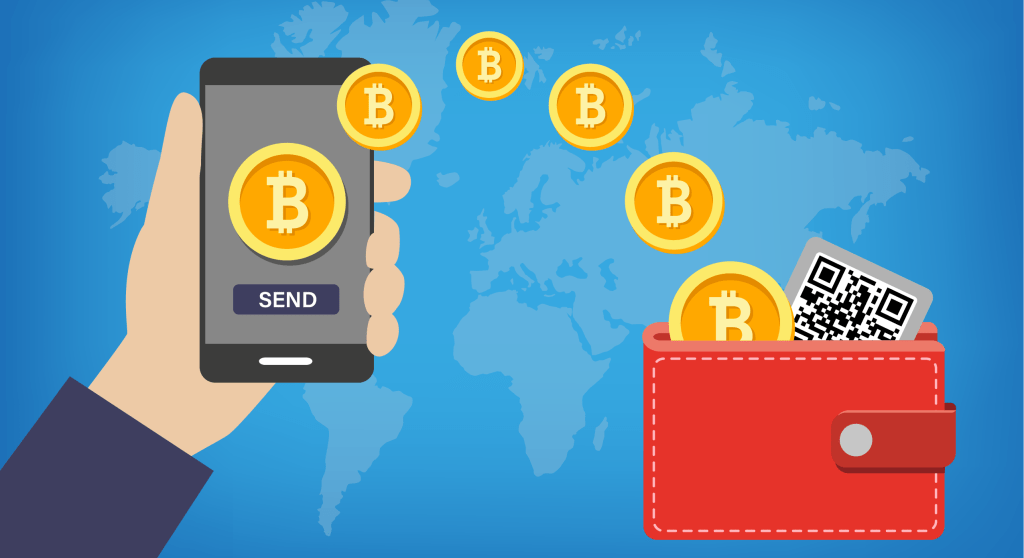
How to Create an NFT -
Storing and managing NFTs in your wallet
- Storing and managing your NFTs in your wallet involves the following steps:
-
Wallet Compatibility: Ensure that your chosen wallet supports the blockchain network on which your NFTs are minted. For example, if your NFTs are Ethereum-based, you’ll need an Ethereum-compatible wallet like MetaMask or MyEtherWallet.
-
Adding NFTs to Your Wallet: Depending on the wallet, there are different methods to add NFTs. The most common method is to copy the contract address or token ID of the NFT and use the wallet’s interface to add it. Some wallets also provide integration with NFT marketplaces, making it easier to manage your collection.
-
Viewing and Managing NFTs: Once the NFTs are added to your wallet, you can access and manage them through the wallet’s interface. You can view details such as ownership, transaction history, and any associated metadata.
-
Transferring NFTs: If you want to transfer an NFT from your wallet to another wallet or address, you can initiate the transfer process within your wallet. Provide the recipient’s wallet address and confirm the transaction.
-
Wallet Security: Ensure that your wallet is secure by following best practices such as using strong passwords, enabling two-factor authentication (2FA), and keeping your private keys or seed phrase offline and secure.
Regularly update your wallet software and stay informed about security practices to protect your NFTs from potential threats.
-
Keeping track of ownership and royalties
- Tracking ownership and royalties associated with your NFTs is crucial for ensuring transparency and receiving royalties when your NFTs are resold. Here are some considerations:
-
Blockchain Record: The blockchain provides an immutable record of ownership and transactions for each NFT. You can track the ownership history of your NFT by reviewing the transaction history associated with the NFT’s contract address.
-
Royalty Mechanisms: Some NFT platforms or smart contracts include built-in royalty mechanisms that automatically distribute a percentage of the sale proceeds to the original creator whenever the NFT is resold. Ensure that you understand the royalty terms and mechanisms associated with your NFTs.
-
NFT Marketplaces: When listing your NFTs for sale on marketplaces, they often handle the royalty distribution process on your behalf. Be aware of the marketplace’s policies and requirements regarding royalties and ensure that you have provided the necessary information to receive
-
Conclusion:
Creating an NFT can be an exciting journey that allows you to showcase your digital creations and connect with a global audience. By following this step-by-step guide, you are now equipped with the knowledge to create and share your own NFT. Remember to stay informed about the ever-evolving NFT landscape and explore the endless possibilities this technology has to offer.
Key Points:
- NFTs represent ownership and authenticity of digital assets.
- Choose a reputable NFT platform that suits your needs.
- Prepare your digital asset and optimize its uniqueness.
- Set up a compatible crypto wallet for NFT storage.
- Mint your NFT with the chosen platform, adding relevant metadata.
- Understand and manage gas fees and transaction costs.
- Verify and promote your NFT to attract potential buyers.
- Manage and track ownership of your NFT in your wallet.
Remember, the NFT space is continuously evolving, so stay updated with the latest trends, news, and best practices to maximize your NFT creation journey. Happy minting!
FAQs:
-
How do I verify the authenticity of an NFT?
- Verify the authenticity of an NFT by checking the blockchain transaction history and associated metadata.
-
Which platforms can I use to sell or transfer my NFT?
- Popular platforms for selling or transferring NFTs include OpenSea, Rarible, and SuperRare.
-
What file formats and specifications are recommended for creating an NFT?
- Commonly supported file formats for NFTs include JPEG, PNG, GIF, and MP4. Specific platforms may have additional requirements.
-
How can I promote my NFT through social media and online communities effectively?
- Engage with NFT communities, use relevant hashtags, and share your NFT on platforms like Twitter, Instagram, and Discord.
-
Is it necessary to collaborate with influencers or collectors to gain visibility for my NFT?
- Collaborating with influencers or collectors can significantly boost the visibility and value of your NFT, but it is not mandatory.
-
How do I store and manage my NFTs in a crypto wallet?
- Use a compatible crypto wallet like MetaMask or Trust Wallet to store, manage, and transfer your NFTs securely.
-
What should I consider when setting a price for my NFT?
- Factors to consider include the perceived value of your artwork, current market trends, and the uniqueness of your NFT.
-
How can I keep track of ownership and royalties when my NFT is resold?
- The blockchain maintains an immutable record of ownership, and some platforms automatically handle royalty distributions.
-
What are gas fees, and how do they impact NFT transactions?
- Gas fees are the transaction costs on the blockchain. They can fluctuate based on network congestion and impact the cost and speed of NFT transactions.
-
Are there any cost optimization strategies for managing gas fees effectively?
- Strategies include monitoring gas prices, optimizing gas limits, batching transactions, and exploring alternative blockchain networks with lower fees.
If you need any help then feel free to contact us/Email: [email protected]
1 thought on “A Comprehensive Guide for How to Create an NFT”
-
-
Pingback: DigiToads NFTs The Next BAYC, CryptoPunks, and Azuki? Full detials - Upnextnfts


